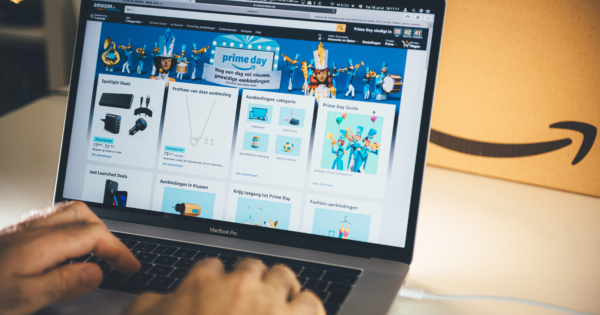Artificial Intelligence Turns Amazon Prime Day into a Strategy Game
作者:Caroline Mackey
Americans spent $24.1 billion online over just four days that coincided this summer with Amazon Prime Day. Behind the headline were equally big changes in how people shopped.
Adobe tracked a 3,300% surge in traffic from AI shopping assistants, marking the first time algorithms became central players in one of retail’s biggest events, according to University of Virginia Darden School of Business professor Luca Cian.
And Cian’s research found that instead of speeding up purchases, AI did something unexpected: it slowed them down.

Professor Luca Cian is the Killgallon Ohio Art
Professor of Business
Administration.
With bots comparing prices, flagging discounts and tracking inventory, urgency faded. The once two-day sprint felt more like a four-day chess match.
“This is the paradox,” Cian said. “Technology designed to speed up decisions is actually stretching them out — but in a way that leaves consumers feeling more confident.”
Cian’s research shows that patience is just one of several new dynamics reshaping how consumers interact with AI. His findings carry clear implications for brands heading into October’s next big Amazon Prime Day event and the ensuing holiday shopping season.
From Automation to Augmentation
For years, shoppers resisted letting algorithms guide their choices, especially for purchases that felt personal. That resistance is fading… when AI is framed correctly.
Cian and colleague Chiara Longoni call this the “Word-of-Machine” effect: consumers accept AI recommendations more readily when the technology is presented as a partner to human expertise rather than a replacement.
“Positioning AI as an extra layer of support dramatically increases acceptance,” Cian said. “Even for experiential purchases where people once wanted a human touch.”
The Fragility of Trust
Trust in AI builds quickly and collapses just as fast.
One positive experience makes shoppers more willing to use assistants again. But one bad experience? It doesn’t just sour them on that tool; it spills over to others.
Cian calls this the “trust transfer phenomenon.” For retailers, it means that small mistakes can carry outsized risk. Visible safeguards, like instant human handoff or clear explanations, aren’t optional, they’re critical.
The Patience Effect
Prime Day revealed a major, counterintuitive trend: AI made shoppers less impulsive.
“What once felt like a sprint now feels like a strategy game,” Cian said. “Consumers know they have time, and their AI assistant is keeping watch.”
This “patience effect” may push retailers to rethink promotions. Instead of leaning on flash deals and manufactured urgency, brands may see more success with transparent bundles, progressive discounts, or price guarantees that reward persistence.
Closing the Sensory Gap
AI shines at providing practical information to influence decisions, like which suitcase lasts longest, which blender is cheapest. But it stumbles on sensory attributes like taste, texture or vibe.
“AI can tell you which headphones are most reliable,” Cian said. “But it can’t yet describe how the bass will make you feel.”
That gap leaves room for influencers, reviews and human curators — especially during October’s event, when consumers may rely on AI for utility but still crave human input for products where experience matters.
Amplifying Human Judgment
Taken together, Cian said, these shifts point to a bigger story: AI isn’t replacing consumer decision-making. It’s amplifying it.
“The winners won’t be the brands that rush to automate everything,” he said. “They’ll be the ones that design AI experiences that respect human preferences, build trust, and enhance — not override — human judgment.”
As shoppers gear up for another round of online commerce this fall, Cian said his research shows one thing clearly: Artificial intelligence isn’t just changing what people buy. It’s changing how they decide.
关于《Artificial Intelligence Turns Amazon Prime Day into a Strategy Game》的评论
暂无评论
